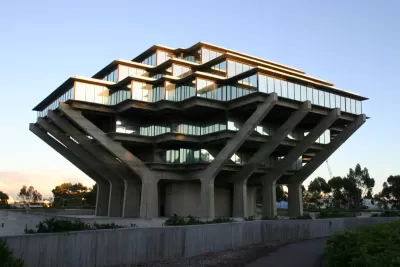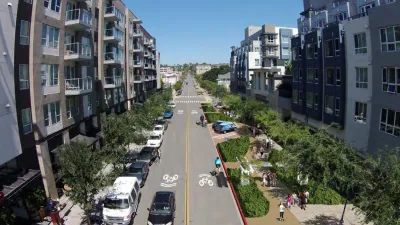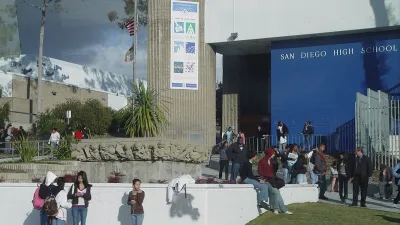Universities do more than teach classes; they can help transform economies and elevate cities to greatness. UC San Diego is banking on it.

Last year, UC San Diego announced it was launching a downtown hub that would be an active partner in transforming San Diego into a hub for the innovation economy.
In fact, according to UCSD Extension Dean and sociologist Dr. Mary Walshok, in the 21st century, universities and research institutions are crucial components to making any city great.
At CityAge: Build the Future, Walshok explained that universities can make cities "magnets" for public and private investment. And the research dollars that universities attract make them natural hubs for talent in all different fields, as well as constant sources of experimentation and innovation in a diverse set of industries.
Great cities have to continuously recalibrate, renew, and reinvent themselves in response to ever-changing demographic, technological, economic, and global imperatives … Without a center or centers of intellectual capital that are actively engaged in understanding and helping to navigate the multiple factors shaping regional futures, big cities—like Phoenix, San Diego, Seattle, or Portland—cannot become great cities.
In addition to teaching languages, providing executive education, and hosting conventions and festivals, the new UC San Diego Urban will help incubate and scale new businesses in order to strengthen diverse economic clusters and build up an innovation ecosystem.
Dr. Walshok's talk is excerpted in The Planning Report.
FULL STORY: New 'UC San Diego.Urban' Looks To Spur City & University Innovation

Alabama: Trump Terminates Settlements for Black Communities Harmed By Raw Sewage
Trump deemed the landmark civil rights agreement “illegal DEI and environmental justice policy.”

Planetizen Federal Action Tracker
A weekly monitor of how Trump’s orders and actions are impacting planners and planning in America.

The 120 Year Old Tiny Home Villages That Sheltered San Francisco’s Earthquake Refugees
More than a century ago, San Francisco mobilized to house thousands of residents displaced by the 1906 earthquake. Could their strategy offer a model for the present?

Indy Neighborhood Group Builds Temporary Multi-Use Path
Community members, aided in part by funding from the city, repurposed a vehicle lane to create a protected bike and pedestrian path for the summer season.

Congestion Pricing Drops Holland Tunnel Delays by 65 Percent
New York City’s contentious tolling program has yielded improved traffic and roughly $100 million in revenue for the MTA.

In Both Crashes and Crime, Public Transportation is Far Safer than Driving
Contrary to popular assumptions, public transportation has far lower crash and crime rates than automobile travel. For safer communities, improve and encourage transit travel.
Urban Design for Planners 1: Software Tools
This six-course series explores essential urban design concepts using open source software and equips planners with the tools they need to participate fully in the urban design process.
Planning for Universal Design
Learn the tools for implementing Universal Design in planning regulations.
Clanton & Associates, Inc.
Jessamine County Fiscal Court
Institute for Housing and Urban Development Studies (IHS)
City of Grandview
Harvard GSD Executive Education
Toledo-Lucas County Plan Commissions
Salt Lake City
NYU Wagner Graduate School of Public Service





























